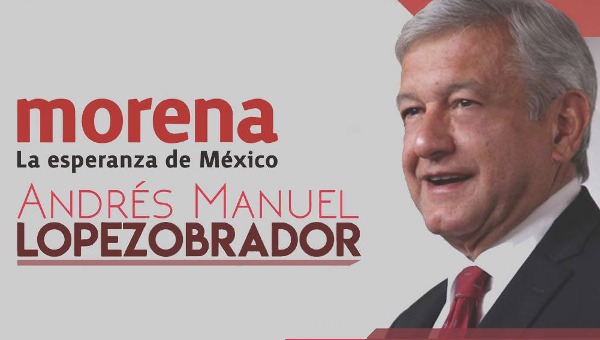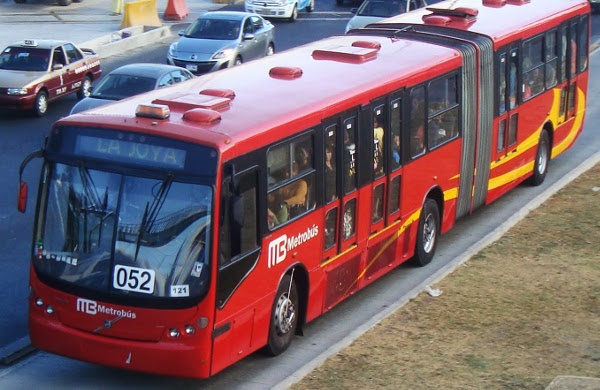What Could a Left Presidency Look Like in Mexico?
Ryan Mallett-Outtrim / Socialist Project.
Andres Manuel Lopez Obrador (AMLO) could become Mexico’s first progressive president in generations, but what would such a presidency actually look like? It is not an easy question to answer, though his time as leader of Mexico’s largest city could offer some insights. Between 2000 and 2005, Lopez Obrador headed the government of Mexico City. In a position akin to mayor, AMLO ran a city that today boasts a population of 8.9 million people in the city proper, and 20 million people if the surrounding greater urban area is included. In short, Mexico City is a country within a country.

When AMLO left office, he enjoyed an 84% approval rating. His welfare reforms were wildly popular, and he gave the city a major facelift while improving public transport and education. On the other hand, he has been accused of failing to address corruption while sparking controversy with his views on domestic security.
We cannot know whether AMLO – who polls suggest could win Mexico’s upcoming presidential elections – will run the country the same way he ran its capital. It has been more than a decade since he left the mayor’s office, and both he and Mexico have changed a lot.
Moreover, a potentially hostile congress could make AMLO’s election promises impossible to fulfil – not to mention the external challenges posed by the Donald Trump administration in the United States.
Nonetheless, AMLO’s time as mayor of Mexico City is our best window into understanding his style of governance. So, a decade on, how did he do?
Welfare
Without doubt, AMLO’s biggest achievement as mayor of Mexico City was to create the country’s first comprehensive, socially-funded retirement pension system.
Before AMLO, Mexico had a mostly privatized system of income-related pensions with some government subsidies. This system was woefully inadequate. In 2000, only about 22% of Mexicans aged 65 and older had any kind of pension. Today, 88% of all Mexican seniors have a pension – largely thanks to AMLO.
In 2001, AMLO’s government introduced a universal pension to residents of Mexico City. Anyone older than 70 was entitled to the pension (later lowered to 68).
The scheme was very popular, though it had problems. For one, AMLO’s government set the pension in 2001 at just half the minimum wage, or about US$65 a month. Nonetheless, more than 80% of Mexico City’s seniors had successfully applied for a pension by the end of the next year.
This figure continued to rise until about 2011, when figures plateaued. The pension application process was considered easy initially, but, after a decade, complaints began to mount that new applicants were suffering long waiting times.
AMLO’s pension program could hardly be considered a failure. In fact, the overwhelming popularity of the program forced AMLO’s political rivals to endorse pensions. AMLO put pensions on the national agenda, and used Mexico City as a laboratory to prove such programs could work.
Sadly, the pensions remain inadequate. Mexico has one of the lowest pension rates in Latin America and nearly half of Mexicans aged 65 and over still live in poverty.
An AMLO presidency could be expected to prioritize welfare programs like the senior pension. However, it remains to be seen whether he could deliver on providing dignified living for millions of elderly Mexicans still living hand-to-mouth.
Redevelopment
Supporters of AMLO say he revitalized a rusting city – and they have a point. Anyone who has visited Mexico City has likely spent some time meandering around the city’s well maintained old colonial centre. AMLO is largely to thank for the state of the historic centre, after he oversaw major renovations during his time as mayor.
Successive Institutional Revolutionary Party (PRI) governments had promised to rejuvenate the city’s heart during the 1980s and ’90s, but when AMLO came to power the colonial centre remained a wreck of semi-abandoned colonial buildings and streets lined with garbage. Under AMLO, streets were re-paved, new street lights installed and the city scrubbed clean.
The secret to AMLO’s success was twofold. For one, his government relied on local communities to carry out most of the work, empowering locals to take the lead in repairing their city streets. This brought grassroots organizations into the fold, turning a largely aesthetic project into an exercise in community cooperation and pride.
But the second pillar of the redevelopment was more controversial: a heavy dependence on the support of billionaire Carlos Slim. Mexico’s richest man poured about US$200-million into the colonial centre during the first redevelopment phase alone, with critics accusing Slim of effectively buying the city.
Tax breaks and other incentives were also used to encourage investment. Critics warned the influx of private development was gentrifying vast swathes of the city and pricing out locals. AMLO responded by arguing the development was being accompanied by better services, better public safety and an improved city for all residents.
Education and Transport
Indeed, another of AMLO’s flagship initiatives was the creation of the Autonomous University of Mexico City (UACM) in 2001. Before then, the Federal District did not even have a public university. Not only that, but the UACM was the first new university built in Mexico for nearly three decades, making it a major achievement.
Later in AMLO’s term, he undertook arguably his biggest challenge: fixing Mexico City’s notoriously gridlocked traffic. The centrepiece of these efforts was the US$30-million Metrobus, which was hailed as Mexico City’s first new major public transport initiative in nearly 30 years.
Initially, the project saw jumbo-sized buses running down their own dedicated lane on a 20 kilometre stretch of the critical artery of Insurgentes, the longest avenue in Mexico City. Today, the Metrobus is on its seventh line, with successive governments expanding the popular initiative.

Along with providing fast, safe public transport, the system was also praised as a major step to address climate change. In its first decade of operation, Metrobus reduced Mexico City’s carbon footprint by just under 144,000 tonnes of carbon dioxide. This was achieved partly by coaxing Mexico City residents away from private vehicles while also replacing older, more polluting buses.
Yet the initiative was not without controversy. A clunky smart card system initially frustrated users, while environmentalists complained the bus lanes were built over the corpses of thousands of historic trees.
Meanwhile, Metrobus’ impact on the city’s traffic problem is unclear. Traffic continues to account for half of the city’s greenhouse gas emissions, stunt economic growth and kill nearly 1000 people annually in road accidents. The problem is so bad that Mexico City’s air remains unfit to breathe for much of the year.
In the face of such a huge traffic congestion crisis, critics say the Metrobus was simply too small in scope. Instead, they say the Metrobus was simply a cheaper alternative to a much better solution – more subway lines.
Still, AMLO has pledged to make university education universally accessible while investing heavily in infrastructure. His record suggests he is dead serious.
Corruption and Security
Finally, if AMLO has an Achilles heel, it is corruption. Despite vowing to crack down on corruption, AMLO’s record is spotty at best.
As mayor, two of AMLO’s close advisors were later accused of accepting bribes. More recently his party, MORENA, has been accused of failing to tackle corruption within its own ranks, misusing public resources for political purposes, and teaming up with allegedly corrupt allies.
Then there was his suggestion of offering amnesty to drug kingpins, which sparked a public backlash. AMLO supporters responded by arguing the backlash was the result of AMLO’s comments being exaggerated.
Nonetheless, on the question of corruption and impunity, AMLO’s record is not particularly impressive. In left-wing circles, it is the corruption issue that all-too-often leads to AMLO being branded as just another unreliable politician.
Foreign Policy and Energy
AMLO’s foreign policy is one area where he has broad support. He has arguably taken the toughest stance of any major candidate against the North American Free Trade Agreement (NAFTA) that has devastated Mexico since the 1990s. He has pledged to do a better job of renegotiating the deal than the current administration of Enrique Pena Nieto.
“Pena is too quiet and Donald Trump speaks very loudly,” AMLO has said. “One doesn’t beg for liberty, one seizes it.”
Comments like these resonate well with Mexicans, who are tired of being derided as criminals and rapists. In some ways, Trump has done the most to help AMLO, despite the presidential hopeful toning down his anti-imperialist rhetoric in recent years.
The same could be said for AMLO’s stance on Mexico’s controversial energy reforms, which opponents say involve privatizing the country’s national resources. Once a firm opponent of the reforms, AMLO’s stance is less clear today. He has promised to carry out a public consultation on the reforms, but one of his closest allies has likewise promised to ensure existing privatization deals remain in place.
All up, AMLO’s record is far from perfect. He has a proven record on welfare, education, infrastructure and development, but his history of seemingly taking a light touch to corruption is worrisome. His energy policy positions are also an issue of concern, even if he may offer a better path than any other candidate.
Ultimately, Mexico’s entire political process is so encumbered with corruption that few, if any, candidates can be considered clean, AMLO included.
So while AMLO is, without any doubt, the only major candidate worth considering for progressives, it is still an open question as to whether he has what it takes to turn Mexico around. •
This article first published by Green Left Weekly.
Ryan Mallett-Outtrim is an Australian independent journalist and travel writer currently living in Puebla, Mexico. He is a member of the alternative news collective Venezuelanalysis.com, and is a contributor to Australian alternative newspaper Green Left Weekly. He blogs at Dissent Sans Frontieres.
from Home http://ift.tt/2Cu86fS
Commentaires
Enregistrer un commentaire